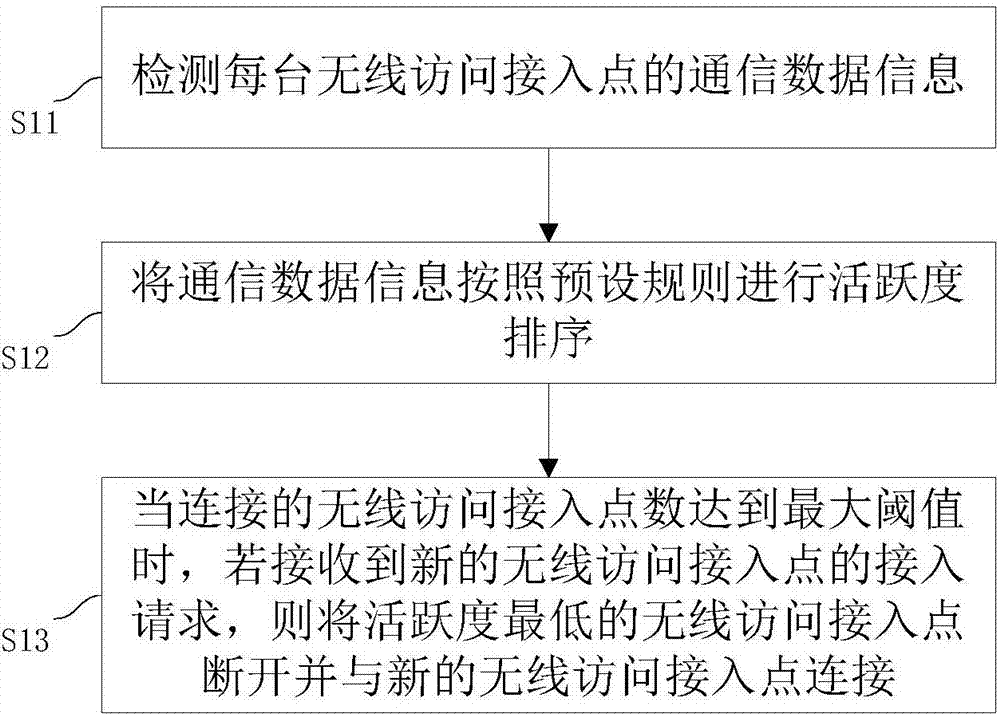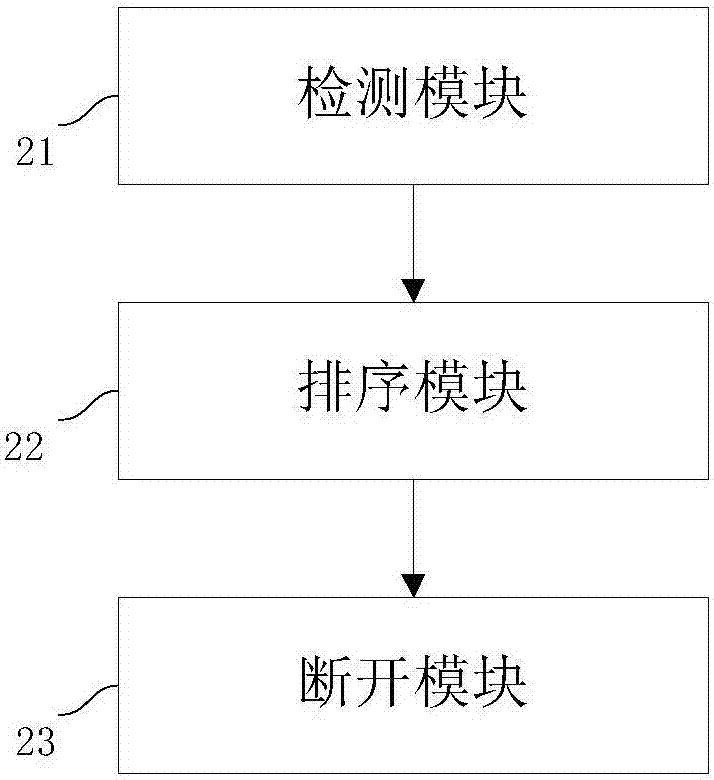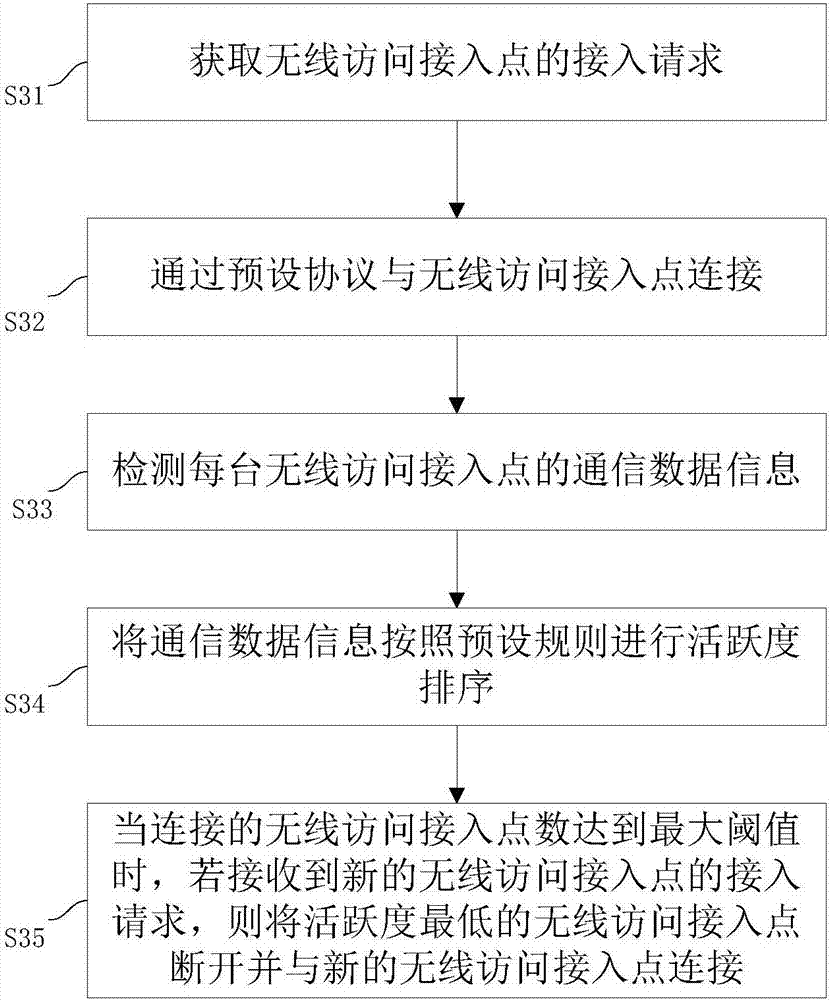Method and system for carrying out connection with a plurality of wireless access points and control system
A wireless access and wireless access technology, applied in the field of communications, can solve problems such as information loss, and achieve the effect of increasing hardware costs and increasing the number of
- Summary
- Abstract
- Description
- Claims
- Application Information
AI Technical Summary
Problems solved by technology
Method used
Image
Examples
Embodiment 1
[0049] This embodiment provides a method for connecting multiple wireless access points, such as figure 1 shown, including steps:
[0050] S11: Detect communication data information of each wireless access point;
[0051] S12: Sort the activity of the communication data information according to preset rules;
[0052] S13: When the connected wireless access point reaches the maximum threshold, if an access request from a new wireless access point is received, disconnect the wireless access point with the lowest activity and connect to the new wireless access point. Incoming connection.
[0053] The wireless access point, referred to as AP for short, is a wireless switch for a wireless network and is also the core of a wireless network. It is equivalent to a bridge connecting wired network and wireless network, and its main function is to connect various wireless network clients together to realize wireless access of multiple users in a wide range.
[0054] The wireless cont...
Embodiment 2
[0079] This embodiment provides a method for connecting multiple wireless access points, such as image 3 shown, including steps:
[0080] S31: Obtain an access request of a wireless access point;
[0081] S32: Connect to the wireless access point through a preset protocol;
[0082] S33: Detect communication data information of each wireless access point;
[0083] S34: Sorting the activity of the communication data information according to preset rules;
[0084] S35: When the connected wireless access point reaches the maximum threshold, if an access request from a new wireless access point is received, disconnect the wireless access point with the lowest activity and connect to the new wireless access point. Incoming connection.
[0085] The difference from the first embodiment is that it further includes step S31 and step S32.
[0086] Specifically, the wireless controller AC obtains the access request of the wireless access point AP, and if the wireless access point AP...
Embodiment 3
[0103] This embodiment provides a method for connecting multiple wireless access points, such as Figure 5 shown, including steps:
[0104] S51: Obtain an access request of a wireless access point;
[0105] S52: Connect to the wireless access point through a preset protocol;
[0106] S53: Detect communication data information of each wireless access point;
[0107] S54: Timely statistics communication data traffic;
[0108] S55: Determine whether the communication data flow is less than the preset flow threshold, if so, determine that the wireless access point is inactive within the preset time, and increase the inactive time; otherwise, determine that the wireless access point is within the preset time In active state, clear the inactive time;
[0109] S56: Sorting the activity of the communication data information according to preset rules;
[0110] S57: When the connected wireless access point reaches the maximum threshold, if an access request from a new wireless access...
PUM
 Login to View More
Login to View More Abstract
Description
Claims
Application Information
 Login to View More
Login to View More - R&D Engineer
- R&D Manager
- IP Professional
- Industry Leading Data Capabilities
- Powerful AI technology
- Patent DNA Extraction
Browse by: Latest US Patents, China's latest patents, Technical Efficacy Thesaurus, Application Domain, Technology Topic, Popular Technical Reports.
© 2024 PatSnap. All rights reserved.Legal|Privacy policy|Modern Slavery Act Transparency Statement|Sitemap|About US| Contact US: help@patsnap.com










